Disclosure: This article contains affiliate links. We may earn a commission from purchases at no extra cost to you, which helps our travel content.
The humid air hits you differently in Gabon. It's not just the moisture that clings to your skin, but the weight of anticipation—knowing you're at the threshold of one of Africa's last true wildernesses. After decades traversing the globe covering sporting events, I've developed a keen sense for places where nature still dictates the rules of engagement. Port-Gentil, Gabon's second-largest city and petroleum capital, might seem an unlikely gateway to primeval adventure, but this industrial hub sits at the edge of an ecological marvel. As our helicopter banked over the coastline, transitioning from the Atlantic's azure waters to the emerald canopy of rainforest that blankets nearly 80% of this nation, I was reminded why conservationists call Gabon 'Africa's Last Eden.' My two-week expedition from Port-Gentil would take me through territories where forest elephants roam beaches at dusk, hippos surf ocean waves, and western lowland gorillas still live largely undisturbed by human presence. This isn't a journey for the casual tourist, but for those willing to embrace the profound privilege of witnessing an ecosystem that functions much as it has for millennia.
Preparing for Gabon's Ecological Marvel
Preparation for Gabon begins months before departure, particularly for an expedition of this caliber. The country requires not just physical readiness but administrative diligence. My journey from Wellington to Port-Gentil involved securing a visa (which requires an invitation letter), yellow fever vaccination certification, and comprehensive travel insurance covering medical evacuation—non-negotiable for venturing into remote rainforest areas.
Port-Gentil itself offers limited luxury accommodation options, with the Mandji Hotel being the standout choice for those seeking Western amenities before heading into the wilderness. I spent two nights here acclimating to the equatorial climate and finalizing arrangements with our expedition outfitter, Gabon Untamed Expeditions.
Equipment considerations for Gabon are critical. The combination of intense humidity, daily rainfall, and challenging terrain demands specialized gear. My waterproof duffel proved invaluable, protecting camera equipment and electronics during boat transfers and unexpected downpours. Equally essential was my satellite communicator, which provided peace of mind when cell coverage disappeared hours into our journey upriver.
Gabon's strict conservation policies mean permits must be arranged well in advance, especially for the national parks. Our expedition package included all necessary permissions, but independent travelers should contact the Agence Nationale des Parcs Nationaux at least three months before arrival.
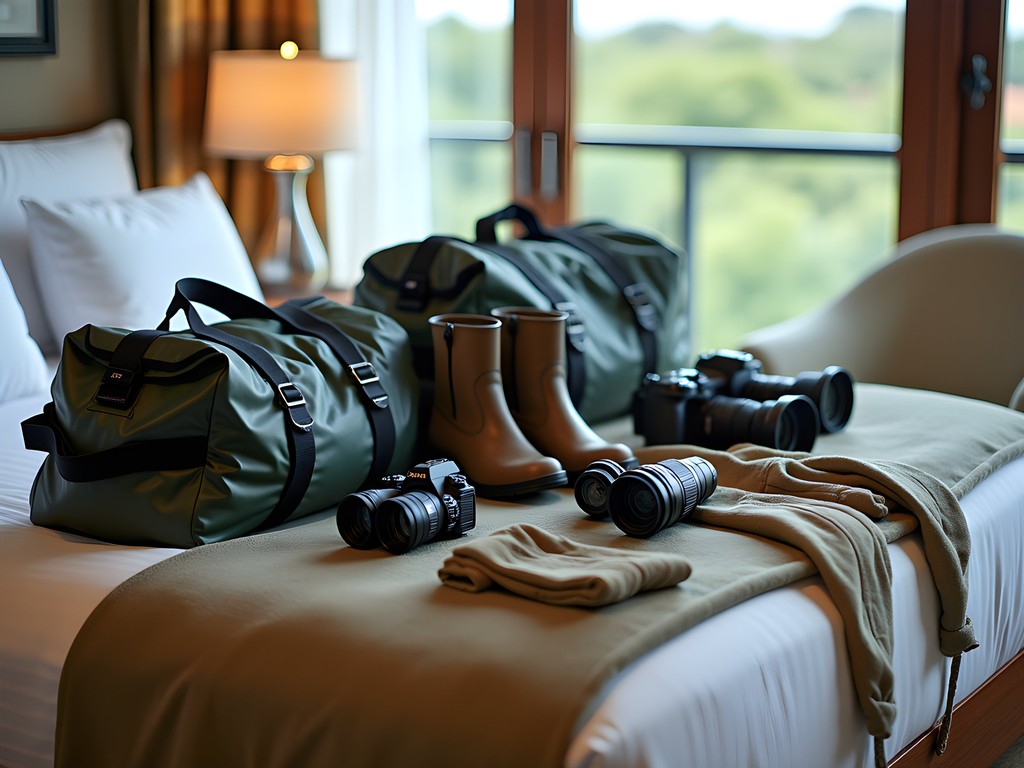
💡 Pro Tips
- Apply for your Gabon visa at least 8 weeks before departure and ensure your passport has at least six months validity
- Pack moisture-wicking, quick-dry clothing in neutral colors (avoid blue, which attracts tsetse flies)
- Exchange currency in Port-Gentil before departure as there are no banking facilities in remote areas
Loango National Park: Where Forest Meets Ocean
After a four-hour journey combining boat and 4x4 travel from Port-Gentil, we arrived at the legendary Loango Lodge, positioned at the entrance to what primatologist Mike Fay called 'Africa's Last Eden.' Loango National Park represents the crown jewel of Gabon's conservation efforts—a place where forest elephants stroll along beaches, buffalo graze in coastal savannas, and hippos venture into ocean surf.
Our luxury tented camp, situated on a lagoon overlooking the park's diverse ecosystems, provided an unexpected level of comfort given the remote location. Solar-powered with en-suite facilities and gourmet meals prepared by a French-trained chef, it offered an ideal balance of immersion and comfort.
During our three-day safari here, we witnessed what makes Loango unique: the remarkable juxtaposition of ecosystems. On our first morning game drive, we traversed dense rainforest before emerging onto windswept beaches where the Atlantic pounds the shoreline. The transition happens so abruptly it feels almost staged—like driving through a portal between worlds.
The wildlife viewing exceeded even my experienced expectations. A herd of forest elephants, smaller and more elusive than their savanna cousins, emerged from the treeline at dusk, silhouetted against the setting sun. These moments reminded me of watching cricket in Sri Lanka years ago, where wild elephants would occasionally be visible beyond the stadium boundaries—nature and human activity in tenuous balance.
Loango's forests harbor incredible biodiversity, including western lowland gorillas. Tracking these magnificent primates requires expert guides, stringent protocols to prevent disease transmission, and considerable patience. Our six-hour trek through muddy terrain was rewarded with thirty minutes observing a silverback and his family group feeding on fruit just forty meters away—a profound encounter that words struggle to capture.
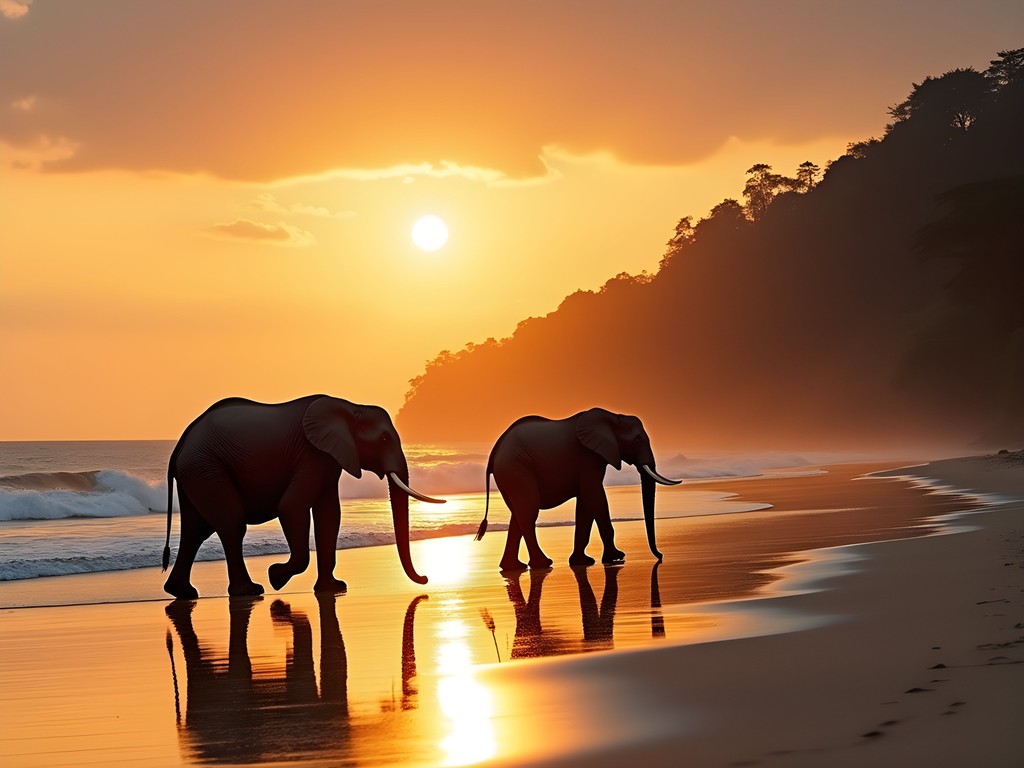
💡 Pro Tips
- Book gorilla tracking permits at least 6 months in advance as only 6 visitors per day are allowed
- Bring a good pair of binoculars with minimum 10x42 magnification for wildlife viewing
- Respect the 7-meter minimum distance rule when observing gorillas and wear an N95 mask during encounters to prevent disease transmission
Ivindo: Journey to the Heart of Darkness
Our expedition's most challenging segment began with a chartered flight from Port-Gentil to Makokou, followed by a five-hour boat journey up the Ivindo River to reach the remote research station that would serve as our base for exploring Ivindo National Park. This UNESCO World Heritage site represents the archetypal Central African rainforest—dense, mysterious, and humbling in its scale and complexity.
Ivindo's claim to fame lies in its inselbergs (isolated rock hills) and spectacular waterfalls, particularly the Kongou Falls, often called 'Africa's most beautiful waterfall.' The three-hour hike to reach these falls traverses primary rainforest so dense that midday feels like twilight. The forest floor—a complex tapestry of buttress roots, fungi, and decomposing vegetation—required careful navigation even with our experienced guides from the Baka indigenous community.
Our accommodations here were basic but functional—elevated wooden platforms with mosquito-netted sleeping areas and communal dining. What Ivindo lacks in amenities, it compensates for with extraordinary biodiversity. Night walks revealed a different dimension of the forest, with galagos (bushbabies) leaping between branches and the haunting calls of tree hyrax echoing through the darkness.
The highlight came during our third day, when our guide spotted fresh gorilla nests. Following strict protocols, we donned our face masks to prevent potential disease transmission and tracked the group for nearly four hours before being rewarded with brief glimpses of these magnificent apes moving through the canopy.
Ivindo also offers exceptional birdwatching opportunities. My compact binoculars revealed African grey parrots gathering at mineral licks and the iridescent plumage of the rare African pitta—a bird I'd waited twenty years to see in the wild since first reading about it in a Wellington library.
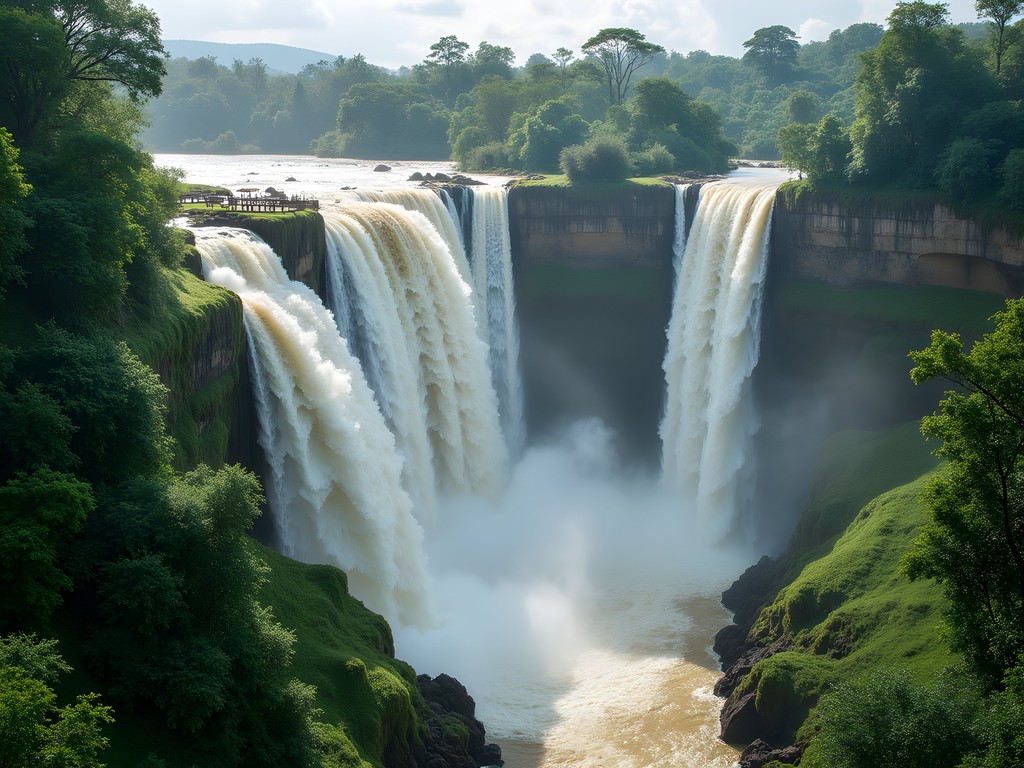
💡 Pro Tips
- Pack lightweight, fast-drying technical clothing as conventional laundry facilities don't exist in remote camps
- Bring twice as many camera batteries as you think you'll need—charging opportunities are limited
- Consider hiring a personal porter for challenging hikes; it provides employment and makes difficult terrain more manageable
Lopé: Ancient Landscapes and Mandrill Encounters
The central portion of our expedition took us to Lopé National Park, another UNESCO World Heritage site that offers a unique landscape where rainforest meets savanna—creating a mosaic habitat that supports extraordinary biodiversity. Unlike the dense forests of Ivindo, Lopé's varied terrain provides exceptional wildlife viewing opportunities across open grasslands bordered by forest patches.
We based ourselves at the comfortable Lopé Hotel, a colonial-era building that once served as a forestry outpost. Its elevated position overlooking the Ogooué River valley provided spectacular sunrise views of mist rising from the forest canopy—a photographer's dream that had me reaching for my camera before dawn each morning.
Lopé's most spectacular wildlife experience comes in the form of mandrill encounters. These colorful primates—the world's largest monkeys—form massive hordes that can number over 800 individuals. Tracking these groups requires early starts and knowledgeable guides who monitor their movements. Our persistence was rewarded with an extraordinary encounter: hundreds of mandrills moving through a forest clearing, their brilliant blue and red facial markings visible as they foraged.
The park also holds significant archaeological importance, with rock engravings dating back 3,000 years. Our guide, Professor Oslisly, has spent decades documenting these sites and provided fascinating context about the ancient human presence in these forests. The juxtaposition of natural and cultural heritage reminded me of similar sites in Tasmania, where aboriginal engravings tell stories of ancient connections to land.
For wildlife photographers, Lopé offers exceptional opportunities. My telephoto zoom lens proved invaluable for capturing distant wildlife without disturbance. The park's network of observation platforms, strategically positioned near forest clearings (bais), allowed us to observe forest elephants, buffalo, and sitatunga antelope coming to mineral licks—a natural theater of animal behavior rarely witnessed elsewhere.
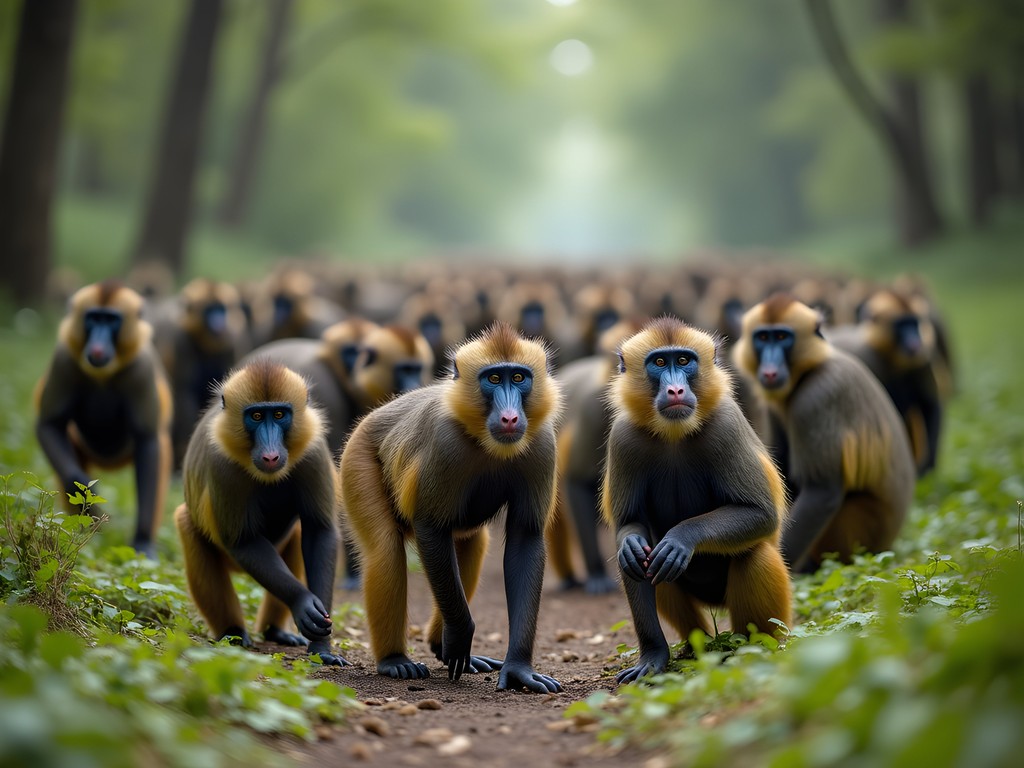
💡 Pro Tips
- Rise early (5:00 AM) for mandrill tracking as they move quickly through their territory
- Visit during dry season (June-August) when savanna grasses are shorter and wildlife viewing is optimal
- Book Professor Oslisly's archaeological tour in advance through the Lopé Hotel for expert interpretation of the rock art sites
Cultural Immersion: The Baka Forest People
No expedition to Gabon's rainforests would be complete without acknowledging the indigenous communities who have lived in harmony with these ecosystems for millennia. Our journey included a two-day cultural immersion with a Baka community near the eastern boundaries of Ivindo National Park.
The Baka, often incorrectly labeled as 'Pygmies' (a term considered pejorative), possess extraordinary knowledge of forest ecosystems. Our time with them was carefully arranged through a community tourism initiative that ensures fair compensation and cultural respect.
We were welcomed with traditional songs before being invited to join a honey-gathering expedition. The Baka's tree-climbing techniques—using a simple belt made of liana vines—demonstrated a physical prowess that belied their small stature. Their ability to locate wild beehives through subtle forest signs revealed a depth of ecological knowledge that no scientific training could replicate.
Particularly fascinating was their use of medicinal plants. Our guide, Mobola, showed us over twenty species used to treat everything from malaria to snake bites. I was reminded of similar knowledge systems I'd encountered among indigenous communities in Costa Rica's rainforests—parallel evolution of botanical wisdom across continents.
The evening brought storytelling around a communal fire, with tales of forest spirits and ancestral heroes translated by our guide. These narratives revealed sophisticated conservation ethics embedded within cultural practices—sustainable harvesting techniques passed down through generations long before Western conservation concepts emerged.
This cultural exchange provided essential context for understanding Gabon's conservation challenges. The Baka's traditional territories now overlap with protected areas, creating complex questions about indigenous rights and conservation goals. Organizations like the World Wildlife Fund are working to develop co-management approaches that honor traditional knowledge while supporting conservation objectives.
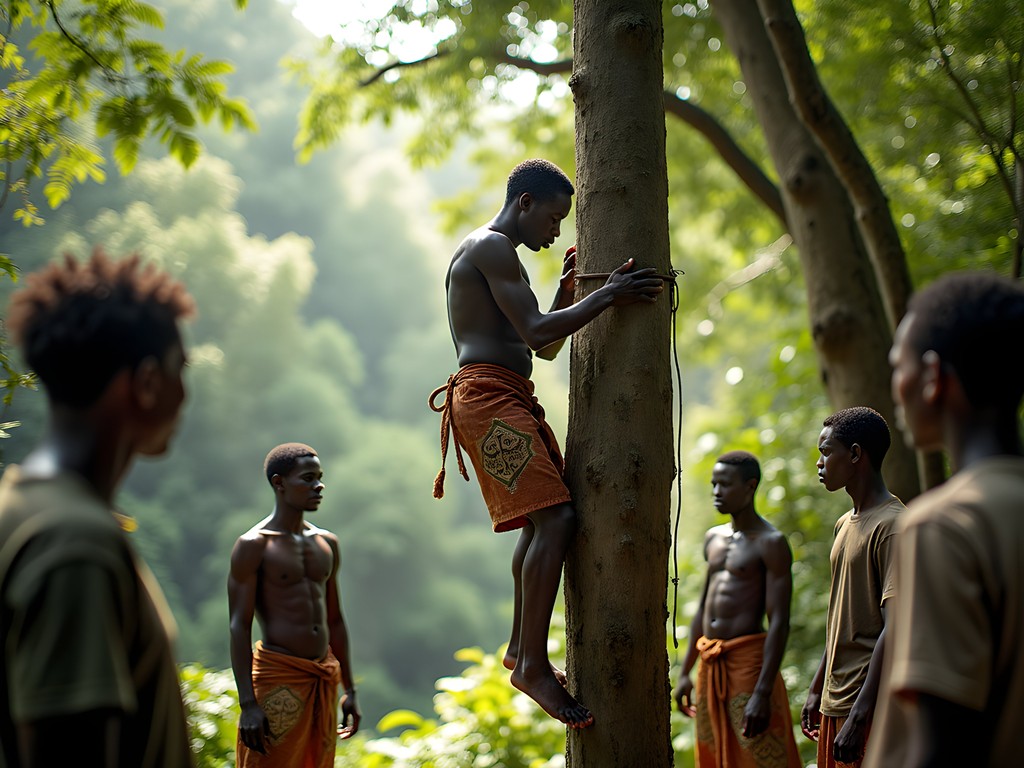
💡 Pro Tips
- Bring small, thoughtful gifts like solar lights or quality tools rather than candy or money when visiting indigenous communities
- Learn basic greetings in Baka language as a sign of respect
- Participate fully in offered activities but always ask before taking photographs of community members
Conservation Challenges: Balancing Development and Preservation
Our expedition's final days included meetings with conservation researchers at the Gabon Biodiversity Program's field station near Port-Gentil. These conversations revealed the complex challenges facing Gabon's extraordinary ecosystems.
Gabon stands at a critical crossroads. Under President Ali Bongo Ondimba, the country has protected over 11% of its territory through a network of 13 national parks. This commitment is remarkable for a developing nation whose economy has historically depended on oil extraction. Yet as petroleum reserves decline, pressure to exploit other resources—timber, minerals, and agricultural land—continues to grow.
Dr. Etienne Massard, lead researcher at the station, explained how Gabon is pioneering innovative conservation financing mechanisms, including carbon credit programs that monetize forest preservation. "The challenge," he noted, "is making forests worth more standing than cut down."
The parallels to New Zealand's conservation journey struck me deeply. Both countries have embraced the concept of ecosystem services—the idea that intact natural systems provide quantifiable benefits worth protecting. Both also grapple with balancing indigenous rights, economic development, and environmental protection.
Our helicopter survey over the coastal areas revealed the stark contrast between protected mangrove systems and areas cleared for development—a visual reminder of conservation's fragility. Using a drone, we captured footage of these transition zones for the research team's documentation efforts.
What makes Gabon's conservation story remarkable is its proactive nature. Rather than trying to restore degraded ecosystems (as in much of the world), Gabon has the opportunity to preserve intact systems before they're lost. This forward-thinking approach places the country at the vanguard of tropical conservation efforts globally.
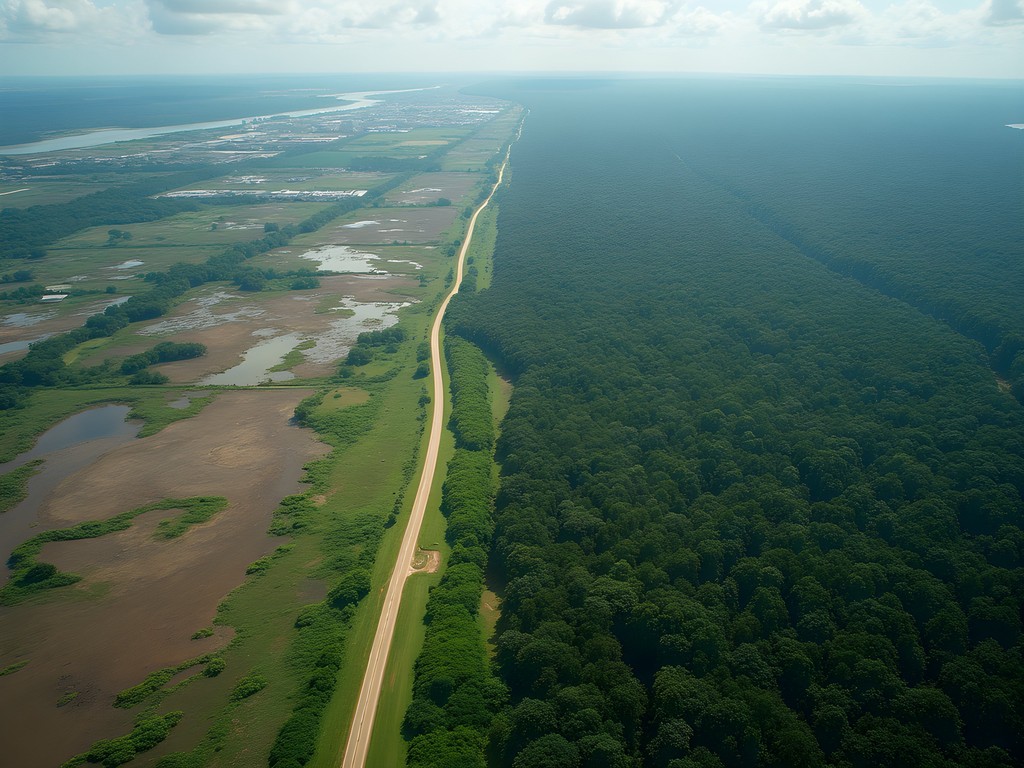
💡 Pro Tips
- Support conservation by using tour operators that contribute to local protection efforts
- Consider carbon offsetting your flight to Gabon through verified rainforest protection programs
- Visit the Gabon Biodiversity Program's public exhibition in Port-Gentil to understand current research initiatives
Final Thoughts
As our expedition boat made its final approach to Port-Gentil's harbor, I found myself reflecting on Gabon's unique position in our world's conservation narrative. This nation holds something increasingly rare—intact ecosystems functioning as they have for millennia. My journey from the beaches of Loango to the depths of Ivindo revealed not just extraordinary biodiversity but a conservation ethos that deserves global recognition and support. For travelers seeking genuine wilderness and wildlife encounters without the crowds of East Africa's more established safari destinations, Gabon offers something profoundly different—a glimpse of Africa as it once was. The journey isn't easy, the infrastructure remains limited, but therein lies its value. In an age of overtourism and Instagram hotspots, Gabon's rainforests remind us what authentic exploration feels like. If you make this journey, go with humility, patience, and deep respect for both the natural systems and the indigenous knowledge that helps protect them. The rewards—moments of connection with our planet's wild heart—will remain with you long after the mud has been washed from your boots.
✨ Key Takeaways
- Gabon offers unparalleled opportunities to witness intact rainforest ecosystems and unique wildlife behaviors like forest elephants on beaches
- Advance planning is essential—permits, vaccinations, and specialized gear must be arranged months before departure
- Supporting community-based tourism initiatives provides crucial economic alternatives to extractive industries
- The combination of coastal, rainforest and savanna ecosystems in close proximity creates extraordinary biodiversity
📋 Practical Information
Best Time to Visit
May-September (dry season) and December-January (short dry season)
Budget Estimate
$12,000-$18,000 for a comprehensive 2-week luxury expedition including charter flights
Recommended Duration
Minimum 12 days, ideally 14-16 days
Difficulty Level
Challenging
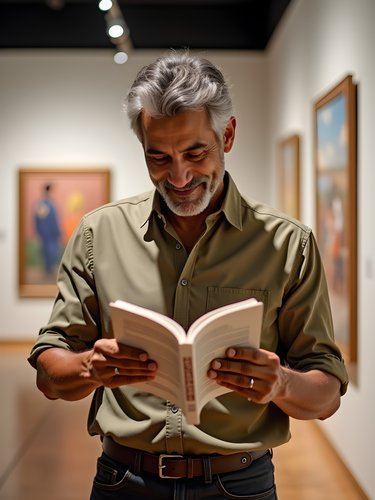


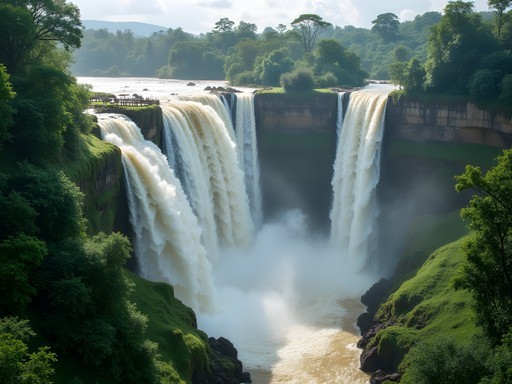


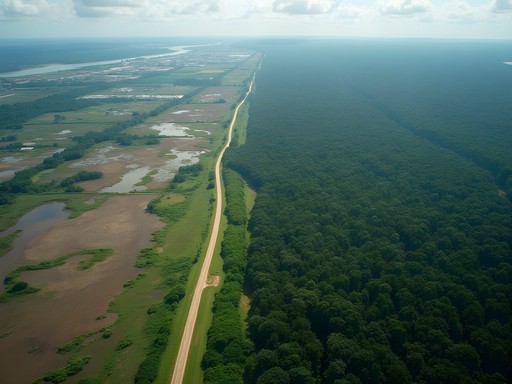


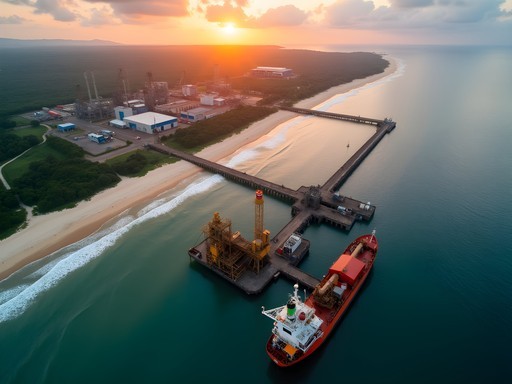







Comments
nomadninja
This looks amazing but way outside my comfort zone. Would you recommend Gabon for someone who's never been to Africa before? Or should I start somewhere more tourist-friendly?
backpackpro
Not Amit but I'd say start with Kenya, Tanzania or South Africa if it's your first time in Africa. Gabon is incredible but definitely not beginner-friendly - infrastructure is limited and English isn't widely spoken.
Amit Sullivan
I agree with @backpackpro - Gabon is more of an 'advanced' destination. That said, if you book with a good tour company that handles all logistics, you could still have an amazing time. Just be prepared for some unpredictability!
happyninja
Those mandrill photos are INCREDIBLE! Did you use a zoom lens or were you really that close?
Amit Sullivan
A bit of both! I had a 100-400mm lens, but our guide in Lopé was amazing at tracking them. We spent about 3 hours following a troop at a respectful distance.
backpackpro
Just got back from Gabon last month! If you're heading to Ivindo like in this post, bring more cash than you think you need. ATMs are basically non-existent once you leave Port-Gentil, and many lodges had issues with their card machines when we were there.
Fatima Sims
Your description of Loango brought back so many memories! I was there last year and still get goosebumps thinking about watching forest elephants emerge onto that pristine beach. One tip for anyone planning to visit: the humidity is NO JOKE. I ruined my first camera from condensation when moving between air-conditioned lodges and the jungle. Now I always keep gear in sealed bags with silica packets for at least 30 minutes before opening. My weather-resistant camera handled the conditions perfectly after I learned that lesson the hard way!
nomadninja
Did you need any special vaccinations before going? Planning my first Africa trip and feeling overwhelmed with the medical prep.
Fatima Sims
Yellow fever vaccination is mandatory (they check at immigration). I also did typhoid, updated my tetanus, and took malaria prophylaxis. The CDC website has a good Gabon-specific checklist!
winterzone
Great post! How difficult was it to arrange transportation from Port-Gentil to Loango? I've heard the logistics can be tricky.
Amit Sullivan
Thanks! You're right, it can be challenging. I arranged everything through a local operator called Gabon Tours & Safaris about 2 months in advance. The boat transfer was surprisingly comfortable, but definitely book ahead during high season (June-September).
winterzone
Super helpful, thanks! Planning for next May so I'll reach out to them soon.
moonpro
Just got back from Gabon two weeks ago! Your description of that humid air hitting you is EXACTLY right - it's like walking into a wall of moisture. We saw the surfing hippos at Loango which was mind-blowing. One thing I'd add for anyone planning a trip - the park fees have gone up since this was posted. Budget about 20% more than whatever you're seeing online. Also, we found having some French basics really helped outside the main tourist areas.
nomadmaster
Surfing hippos?! That must have been incredible. How many days did you spend in Loango?
moonpro
5 days, which felt just right. Any less would have been rushed. We stayed at the eco-lodge near the lagoon - basic but comfortable. The hippos were on day 3 - apparently we got lucky!
Sophia Gomez
Reading this brought back so many memories of my own Gabon adventure! I started in Port-Gentil too, but unlike Amit, I went during the rainy season. The downpours were theatrical - like standing under a waterfall - but they created this magical mist that hung over the rainforest afterward. The Ivindo section of your post resonated deeply. That first moment when our boat rounded the bend and we saw a clearing filled with forest elephants was breathtaking. Our guide Francis (ask for him if you go!) had this uncanny ability to spot wildlife I would have completely missed. One evening he pointed out a pangolin curled up in a tree - apparently super rare to spot! For anyone planning this trip: worth every franc, but be prepared for plans to change due to weather and wildlife movements. Flexibility is key.
WildlifeWanderer
That shot of the forest elephant against the sunset is National Geographic worthy! Did you use a special lens?
AmitS
Thanks! Just got lucky with timing and light. Used a 70-200mm f/2.8 with a 1.4x extender. The guides knew exactly where to position us for the best chance of that beach crossing shot!
RainforestRover
Just got back from Gabon last month. If you're heading to Ivindo like in this post, bring LOTS of extra socks. The constant moisture means your feet never fully dry out. Changed socks 2-3 times daily. Also, the boat trip from Port-Gentil that Amit mentions can be rough in certain seasons - Dramamine was my best friend!
skyperson
good to know about the socks! did you do the night walks in ivindo? worth it?
RainforestRover
100% worth it! Saw galagos, pottos and even a palm civet. Bring a good headlamp though - the ones they provide are pretty weak.
TravelMinded
Those hippos on the beach photos are incredible! Never seen anything like that before.
Venture X
Premium card with 2X miles, $300 travel credit, Priority Pass